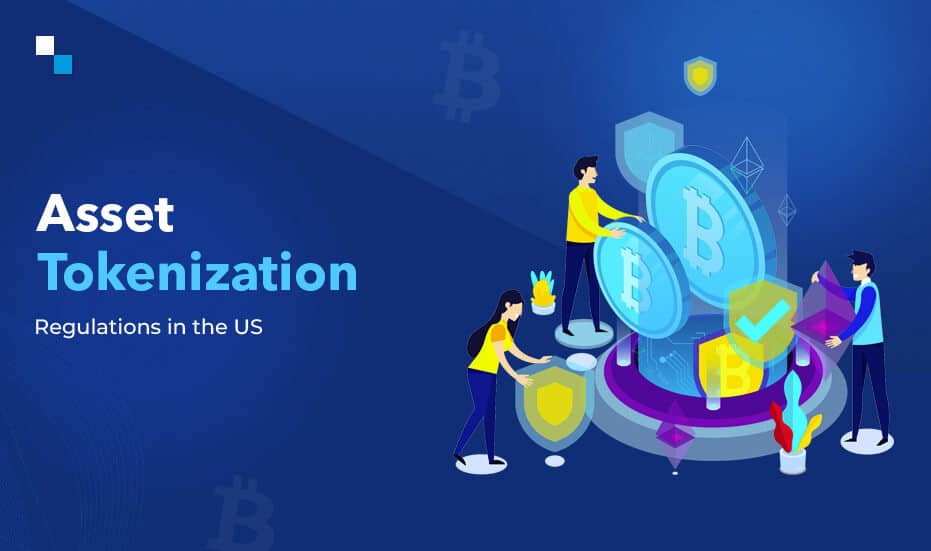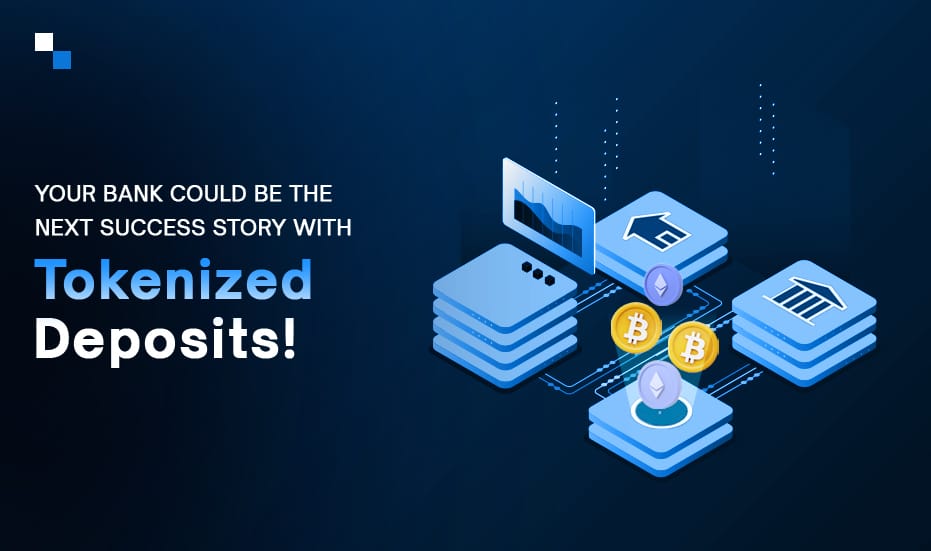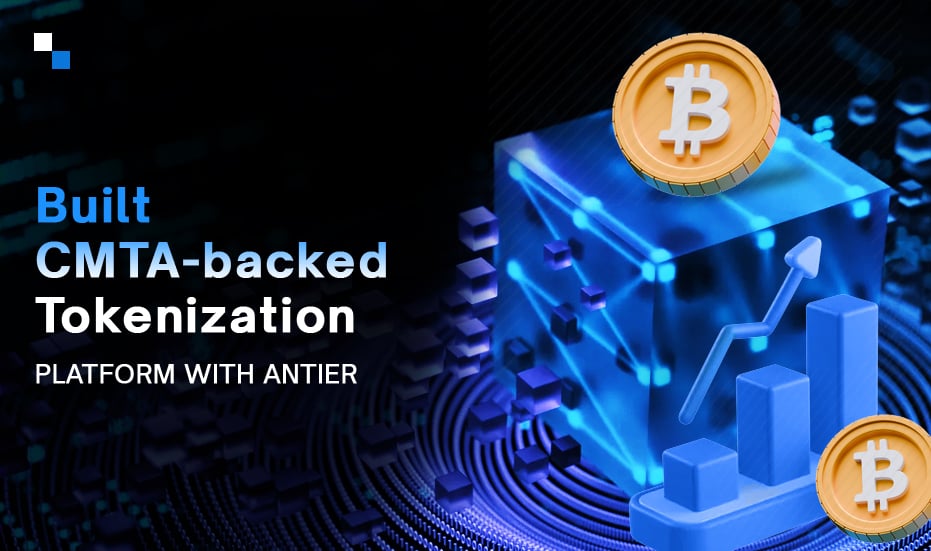
Top TRC20 Crypto Wallet Development Trends to Watch Out in 2024
November 29, 2023
The Secret Ingredients of Crafting Exceptional Crypto Coins
November 30, 2023The financial landscape is undergoing a seismic shift fueled by the rise of blockchain technology and digital assets. Asset tokenization, the process of converting traditional assets into digital tokens on a blockchain, stands at the forefront of this revolution. In the United States, a nation known for its robust financial markets and pioneering spirit, the potential of asset tokenization is undeniable. However, navigating the evolving regulatory landscape surrounding this innovative technology can be a complex undertaking. This comprehensive blog delves into the intricate world of US asset tokenization regulations, providing a clear picture for beginners and seasoned investors alike.
Asset Tokenization: Unlocking a World of Possibilities
At its core, asset tokenization revolves around the creation of digital tokens representing ownership rights in a real-world asset. These tokens reside on a blockchain, a distributed ledger technology that offers immutability, transparency, and enhanced security. The asset itself can be anything from real estate and precious metals to intellectual property and even fractional ownership of companies. By leveraging blockchain, asset tokenization unlocks a plethora of benefits:
- Increased Liquidity: Traditionally illiquid assets can be fragmented into smaller, more tradable digital tokens, facilitating easier access to a broader investor base. Imagine a piece of real estate being divided into tradable tokens, allowing individuals to invest in a fraction of the property instead of requiring a significant upfront investment.
- Enhanced Efficiency: Streamlined processes for asset issuance, trading, and settlement reduce operational costs and administrative burdens. Gone are the days of cumbersome paperwork and lengthy settlement times. Blockchain technology automates many processes, leading to a more efficient and cost-effective system.
- Improved Transparency: Blockchain technology provides an immutable record of ownership and transaction history, enhancing transparency and reducing the risk of fraud. Every transaction involving a token is permanently recorded on the blockchain, providing a clear audit trail for all participants.
- Fractional Ownership: Asset tokenization enables fractional ownership of previously indivisible assets, democratizing access to investment opportunities. This allows individuals to participate in ownership of high-value assets that were previously out of reach for many investors.
- Global Reach: Digital tokens can be traded 24/7 on a global scale, eliminating geographical restrictions and fostering a more interconnected marketplace. Investors from around the world can participate in the trading of tokenized assets, creating a more liquid and efficient market.
A Historical Context: The Patchwork of Pre-2024 Regulations
Understanding the current state of US asset tokenization regulations requires a glimpse into the past. Prior to the emergence of blockchain technology and digital assets, existing regulations formed the foundation for overseeing these novel financial instruments. Here’s a breakdown of the key players:
- Securities and Exchange Commission (SEC): Established in 1934, the SEC is the primary regulator of securities markets in the US. It applies the Howey Test, a legal framework established by the Supreme Court in 1946, to determine whether an investment contract exists. If an asset qualifies as a security under the Howey Test, it falls under the SEC’s purview and requires registration.
- Commodity Futures Trading Commission (CFTC): Established in 1974, the CFTC regulates futures and options contracts on commodities like agricultural products and energy. In the context of digital assets, the CFTC focuses on assets deemed commodities, such as Bitcoin and Ether. These assets are generally subject to less stringent regulations compared to securities.
- Financial Crimes Enforcement Network (FinCEN): Established in 1989, FinCEN is a bureau within the US Department of the Treasury. It plays a crucial role in enforcing Anti-Money Laundering (AML) and Know Your Customer (KYC) regulations for both digital assets and the exchanges facilitating their trading.
Challenges Posed Pre-2024 Landscape
The pre-2024 regulatory landscape surrounding asset tokenization was characterized by a patchwork of regulations. The fragmented approach created some ambiguity and uncertainty for businesses and investors seeking to engage in asset tokenization activities. Here’s a closer look at the challenges posed by the pre-2024 landscape:
- Classification Uncertainty: Determining whether an asset token is a security, or a commodity could be a complex process. The Howey Test, designed for a different era, lacked clear-cut criteria for classifying digital assets, leading to inconsistencies in regulatory interpretations. Businesses struggled to navigate the murky waters, unsure of which regulatory body they needed to comply with.
- Compliance Burden: Businesses navigating the fragmented regulatory landscape faced a complex compliance burden, with overlapping regulations from different agencies. Complying with a myriad of regulations could be time-consuming, expensive, and stifle innovation.
- Limited Innovation: Regulatory uncertainty stifled innovation in the asset tokenization space, as businesses hesitated to engage in activities with unclear regulatory frameworks. The lack of clear regulations discouraged many potential players from entering the market, hindering the overall growth of the industry.
Turning Point in the Asset Tokenization Regulations in the US
2024 witnessed a turning point in US digital asset regulation with the passage of two landmark bills:
- The Lummis-Gillibrand Act (Passed July 2024): This bipartisan legislation establishes the CFTC as the primary regulator for spot and derivatives markets related to digital assets. It provides a much-needed framework for token classification, with the CFTC overseeing most digital assets except for those deemed securities. The act further clarifies the SEC’s role in regulating security tokens with clear investment contracts. This act replaces previous attempts at comprehensive legislation, such as the Digital Trading Clarity Act, whose fate remained uncertain.
- The Digital Commodity Exchange Act (Passed May 2024): The act empowers the CFTC to regulate digital asset exchanges as designated contract markets (DCMs) and swap execution facilities (SEFs). It fosters greater transparency and accountability within the trading ecosystem, ensuring fairer and more efficient markets. The Digital Commodity Exchange Act builds upon existing legislation like the Commodity Exchange Act (CEA) of 1936, which established the CFTC’s core regulatory framework for derivatives markets.
These landmark bills mark a significant shift towards regulatory clarity for asset tokenization. Here’s a closer look at the potential impact:
- Enhanced Market Certainty: Businesses and investors now have a clearer picture of regulatory expectations, promoting innovation and overall market growth. This clarity can attract new participants and foster a more vibrant asset tokenization ecosystem. With a more defined regulatory landscape, businesses can invest in and develop new tokenization projects with greater confidence.
- Streamlined Oversight: The CFTC’s primary role simplifies the regulatory process for token issuers, reducing compliance burdens and associated costs. Businesses will no longer have to navigate a maze of regulations from different agencies, streamlining the process of bringing tokenized assets to market.
- Consumer Protection: The framework prioritizes investor protection by requiring robust disclosure standards for token offerings. This transparency helps mitigate potential risks and fosters trust within the market. Investors can be more confident in the legitimacy of token offerings with clear and comprehensive disclosures from issuers.

Navigating the Nuances: Rules and Restrictions for Security Tokens
While the Lummis-Gillibrand Act clarifies the regulatory landscape for most digital assets, security tokens remain under the purview of the SEC. Here’s a deeper dive into the rules and restrictions governing security tokens in the US:
- Securities Act of 1933: Any offering of securities, including security tokens, must comply with the Securities Act of 1933. This act requires that all securities offered or sold to the public in the U.S. must be registered with the SEC unless an exemption applies. Security tokens representing ownership in a company, for example, would likely fall under this category.
- Regulation Crowdfunding (CF): Allows eligible companies to offer and sell securities through crowdfunding. The rules include limits on the amount of money an issuer can raise using the crowdfunding exemption, disclosure requirements for issuers, and certain investor protections. This regulation may be applicable for certain security token offerings, depending on the structure and target investors.
- Regulation A+: An exemption from registration for smaller offerings of securities up to $50 million within a 12-month period, subject to eligibility, disclosure, and reporting requirements. Similar to Regulation Crowdfunding, this exemption may be relevant for specific security token offerings that meet the criteria.
- Regulation D, Rule 506(b): A safe harbor under Regulation D that allows companies to raise an unlimited amount of capital without registering their securities with the SEC, provided they only solicit accredited investors and do not use general solicitation or advertising. This exemption can be beneficial for security token offerings targeting institutional investors or a limited pool of accredited investors.
- Howey Test: A test derived from the Supreme Court case SEC vs. W. J. Howey Co. to determine whether a transaction qualifies as an “investment contract” and therefore would be considered a security under the Securities Act and the Securities Exchange Act of 1934. If a token passes the Howey Test, it is subject to SEC regulations as a security. Understanding the Howey Test is crucial for issuers to determine if their security token offering falls under SEC jurisdiction.
- Framework for “Investment Contract” Analysis of Digital Assets: The SEC provided a framework to help market participants determine whether a digital asset is an investment contract and therefore a security. This framework offers some guidance but leaves room for interpretation on the specific characteristics of a token.
- Registration Exemptions: There are several exemptions from registration that may apply to security tokens, such as those provided by Regulation D (including Rule 506(c) for general solicitation to accredited investors), Regulation S (for offerings outside the U.S.), and Regulation A (for limited public offerings).
The Road Ahead: A Collaborative Journey Towards a Thriving Future
The evolving regulatory landscape for asset tokenization in the US presents both challenges and opportunities. Here’s a glimpse into some key considerations for the future:
- International Harmonization: While the US has taken a significant step towards clarity, a lack of global consensus on digital asset regulations persists. International cooperation is crucial to establish a unified approach that fosters innovation and protects investors across borders. Different regulatory frameworks in various countries can create complexities for businesses seeking to operate on a global scale.
- Taxation Clarity: Clear guidelines on digital asset taxation are essential for broader adoption. The current tax treatment of digital assets can be ambiguous, leading to uncertainties for investors and businesses. Establishing clear tax regulations will provide much-needed guidance and encourage further participation in the asset tokenization space.
- Decentralized Finance (DeFi): DeFi refers to a financial system built on blockchain technology, enabling peer-to-peer financial transactions without traditional intermediaries. Striking a balance between fostering innovation in DeFi and ensuring consumer protection and financial stability will be a crucial challenge for regulators. Finding the right regulatory framework for DeFi will be vital to harness its potential while mitigating potential risks.
Beyond these considerations, here are some additional trends shaping the future of asset tokenization:
- Growth in Security Token Offerings (STOs): With a clearer regulatory framework, STOs are likely to see significant growth. STOs offer a more compliant and regulated alternative to traditional Initial Coin Offerings (ICOs), potentially attracting a broader range of investors.
- Rise of Security Token Exchanges (STXs): Dedicated platforms for trading security tokens are expected to emerge, catering to the growing demand for complaint and regulated security token trading. These exchanges will play a crucial role in facilitating a secure and efficient secondary market for security tokens.
- Mainstream Adoption Across Industries: Asset tokenization has the potential to revolutionize various industries beyond finance. From real estate and intellectual property to supply chain management and even voting systems, the applications of asset tokenization are vast. As regulations evolve and the technology matures, expect to see mainstream adoption across diverse industries.
Final Words
In conclusion, the US asset tokenization landscape is undergoing a period of significant transformation. With the landmark legislation of 2024, the path towards regulatory clarity is taking shape. While challenges remain, the future holds immense potential for asset tokenization to reshape the financial world. Embracing a collaborative approach that fosters innovation while prioritizing consumer protection will be key to unlocking the full potential of this transformative technology and positioning the US as a leader in this dynamic space.



